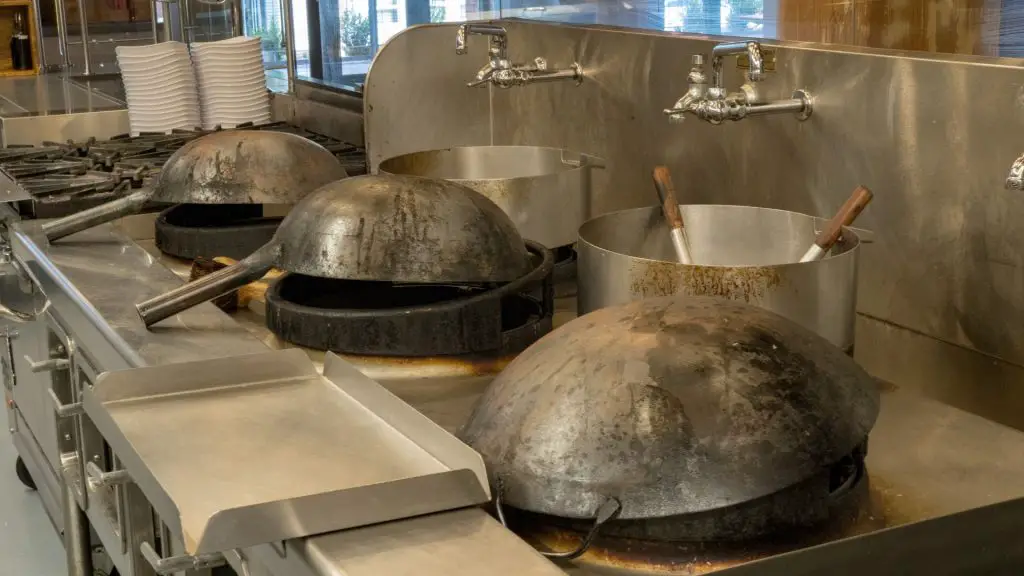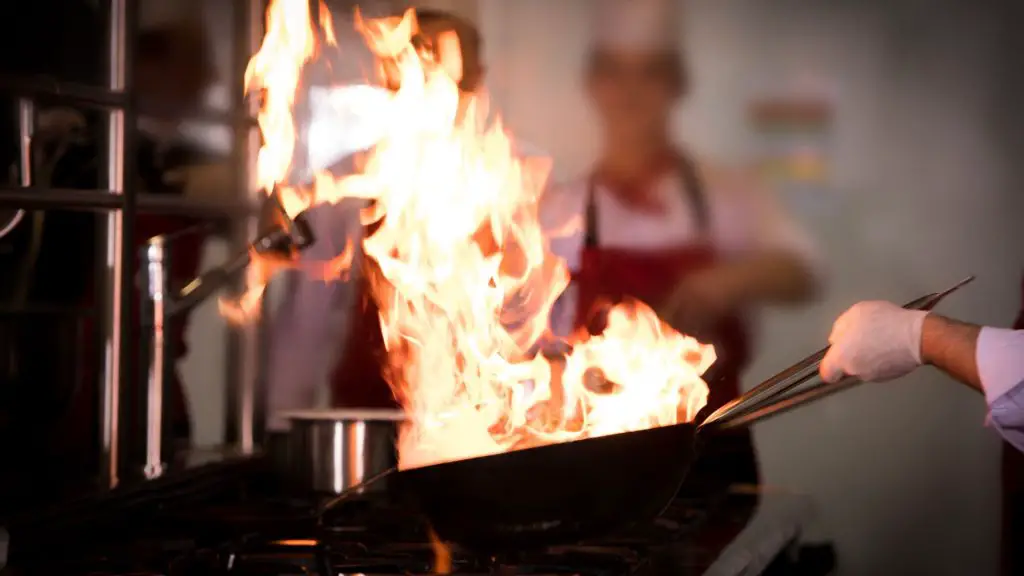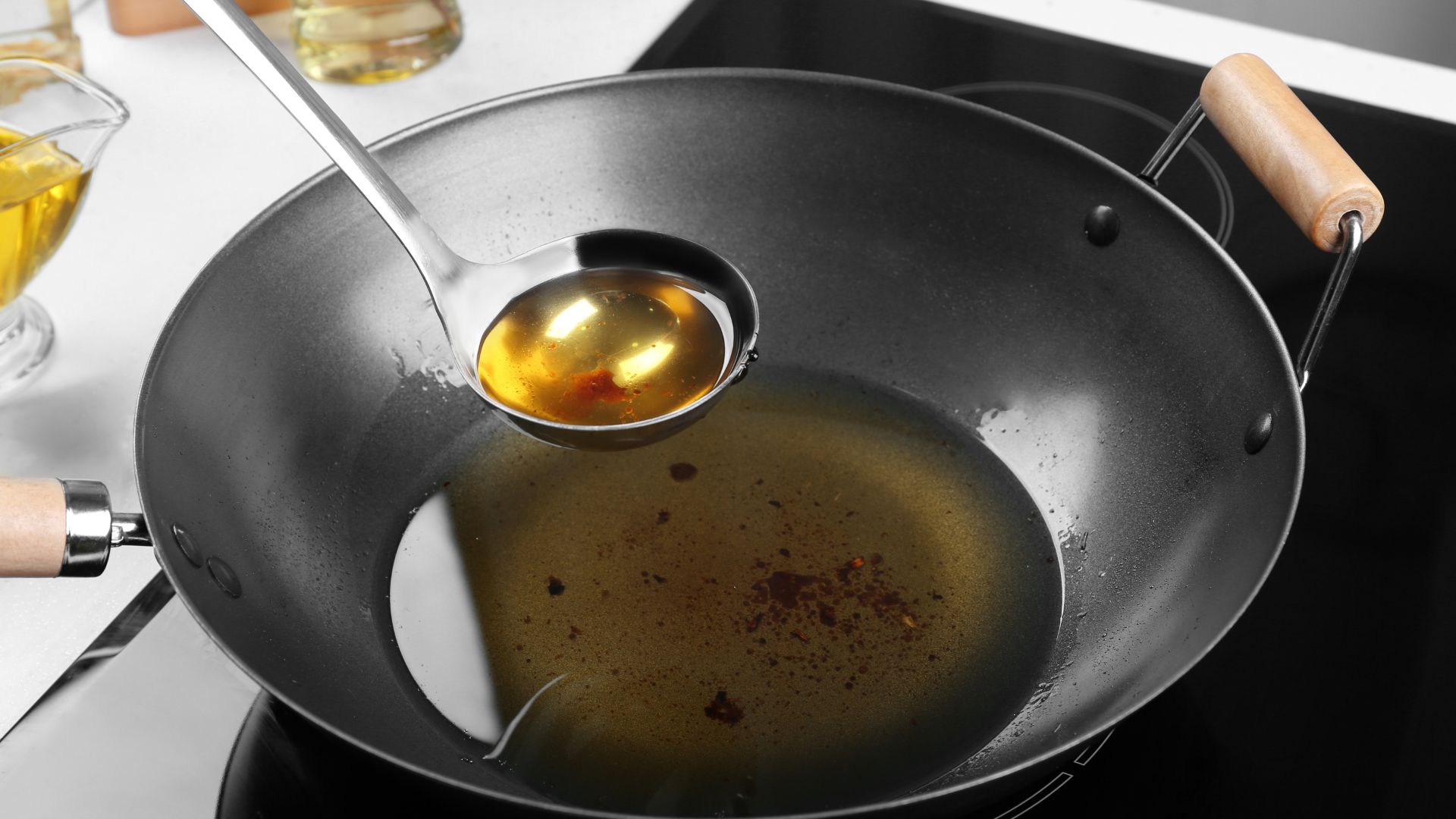Seasoning a wok is a crucial step in preparing it for cooking. Essentially, it means coating the wok with oil and heating it until it develops a non-stick surface. This process helps to create a natural non-stick coating that prevents food from sticking to the surface of the wok while cooking.
Seasoning a wok is particularly important for electric stoves, as they do not produce as much heat as gas stoves, and food tends to stick more easily to the surface of the wok. A properly seasoned wok can also withstand high heat, distribute heat evenly, and make stir-frying, deep-frying, and other cooking methods easier and more efficient.
Not only does a seasoned wok improve the quality of the food being cooked, but it also increases the lifespan of the wok. A well-seasoned wok will have a natural protective layer that prevents it from rusting, which can ultimately damage the wok and make it unusable.
Overall, seasoning a wok is an essential step for any cooking enthusiast who wants to make the most of their electric stove and enjoy delicious, healthy, and well-cooked meals.
With a little bit of patience and attention to detail, anyone can season a wok and enjoy the benefits of a properly seasoned cooking tool. So this begs the question: how do I season a wok on an electric stove?
How To Choose The Right Wok

Choosing the right wok is an important first step in seasoning a wok for an electric stove. Here are a few key considerations when selecting a wok:
- Types of woks available for electric stoves:
There are several types of woks available in the market. For electric stoves, the two most common options are carbon steel and non-stick woks. Carbon steel woks are the traditional choice and are highly durable, while non-stick woks are more convenient and easier to clean.
- Material of the wok:
Carbon steel is the most popular choice for a wok as it heats up quickly and is very durable. Cast iron woks are also a great option for electric stoves but are heavier and take longer to heat up. Stainless steel woks are another option but may not be the best choice for stir-frying.
- Choosing the right size of the wok:
Woks come in a range of sizes, and it is important to choose the right size for your needs. Generally, a 12-inch wok is the most versatile size for most home cooks. However, if you cook for a larger family, you may need a bigger wok. It is also important to consider the size of your electric stove and ensure that the wok fits comfortably on the burner.
Once you have selected the right wok for your needs, you can begin the process of seasoning it, so be prepared because you’ll be shown how to season a wok on an electric stove.
Seasoning The Wok On An Electric Stove

Now that you have your wok, it’s time to season it for use on your electric stove. Here are the steps to follow:
- Heating the wok on the electric stove:
Place your wok on the electric stove and turn the heat to high. Heat the wok for a few minutes until it becomes hot. This will help to open up the pores of the wok and prepare it for seasoning.
- Applying a thin layer of oil to the wok:
Once the wok is hot, turn off the heat and add a thin layer of oil to the surface of the wok. Use a high smoke point oil such as vegetable, canola, or grapeseed oil. Spread the oil around the wok using a paper towel or a brush. Make sure to cover the entire surface of the wok, including the sides.
- Heating the wok until it starts smoking:
Turn the heat back on to high and heat the wok until it starts smoking. This process will help the oil to penetrate the surface of the wok and create a non-stick layer. The smoking indicates that the oil is reaching its smoke point and polymerizing on the wok’s surface.
- Turning off the heat and letting the wok cool down:
Once the wok starts smoking, turn off the heat and let the wok cool down completely. You can leave it on the stove or transfer it to a cool surface. Do not immerse the hot wok in cold water, as this can cause warping or cracking.
- Repeating the process a few times:
Repeat this process 2-3 more times, adding a thin layer of oil and heating the wok until it starts smoking each time. This will help to build up a durable and long-lasting non-stick layer on the surface of the wok.
- Maintaining the seasoned wok:
After seasoning your wok, it is important to maintain it properly to preserve the non-stick coating. Avoid using abrasive cleaners or harsh detergents, as these can damage the surface of the wok. Instead, use a soft sponge or cloth to clean the wok and rinse it with hot water.
You can also re-season your wok periodically, especially if you notice that food is starting to stick to the surface. To do this, simply heat the wok, apply a thin layer of oil, and heat until it starts smoking again.
- Tips for using a seasoned wok:
When cooking with a seasoned wok, it is important to preheat the wok before adding any ingredients. This will help to prevent food from sticking to the surface. You should also use high heat, as this will help to cook the food quickly and evenly.
It is also important to avoid overcrowding the wok, as this can cause the temperature to drop and food to steam instead of stir-frying. Lastly, avoid using metal utensils on the surface of the wok, as this can damage the non-stick coating. Instead, use wooden or silicone utensils.
In conclusion, seasoning a wok is an essential step for anyone who wants to use it on an electric stove. It helps to create a non-stick coating, distribute heat evenly, and make cooking more efficient. By following these simple steps, you can season your wok at home and enjoy delicious, healthy, and well-cooked meals.
Caring For a Seasoned Wok

Once you have seasoned your wok for use on an electric stove, it’s important to care for it properly to maintain its non-stick coating and longevity. Here are some tips for caring for your seasoned wok:
- Cleaning the wok after each use:
After using your wok, it’s important to clean it thoroughly to remove any food particles and prevent them from sticking to the surface. Avoid using abrasive cleaners or steel wool, as these can damage the non-stick coating. Instead, use a soft sponge or cloth and hot water to clean the wok. If necessary, you can add a small amount of mild dish soap. Rinse the wok thoroughly and dry it with a clean towel.
- Re-seasoning the wok when necessary:
Over time, the non-stick coating on your wok may start to wear off, and you may need to re-season it to restore its non-stick properties. If you notice that food is starting to stick to the surface or if the wok looks dull and uneven, it’s time to re-season it. Follow the same seasoning process as before, applying a thin layer of oil and heating the wok until it starts smoking.
- Storing the wok properly:
After cleaning and drying your wok, store it in a dry place to prevent rusting. You can place a paper towel inside the wok to absorb any moisture. Avoid stacking heavy items on top of the wok, as this can damage the surface. If you need to stack your woks, place a soft cloth or towel between them.
- Avoiding acidic and salty ingredients:
Acidic and salty ingredients can damage the non-stick coating on your wok, so it’s important to avoid using them when cooking with a seasoned wok. If you do need to use acidic or salty ingredients, add them towards the end of the cooking process and avoid letting them sit in the wok for too long.
By following these simple tips, you can care for your seasoned wok and enjoy delicious stir-fries, sautés, and other Asian dishes for years to come. Remember to clean and dry your wok after each use, re-season it when necessary, store it properly, and avoid using acidic and salty ingredients. With a little bit of care and attention, your seasoned wok can become a treasured kitchen tool that you will use and cherish for years.
Conclusion

In conclusion, seasoning a wok is a crucial step for preparing it for cooking, especially on electric stoves. It creates a natural non-stick coating that prevents food from sticking to the surface, withstands high heat, and distributes heat evenly.
Proper seasoning also increases the lifespan of the wok, preventing it from rusting and damage. Choosing the right wok, including size and material, is crucial for effective seasoning.
The process of seasoning involves heating the wok, applying a thin layer of oil, heating until smoking, and repeating the process 2-3 more times. Maintaining the seasoned wok is also crucial for preserving the non-stick coating, avoiding abrasive cleaners or harsh detergents, and preheating the wok before adding any ingredients when cooking.
Overall, with the right attention and patience, anyone can season a wok and enjoy the benefits of a properly seasoned cooking tool.
